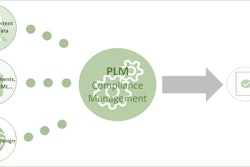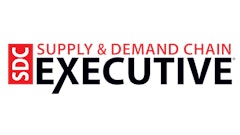
Today’s corporate debt levels have never been seen before, leaving supply chain professionals in uncharted territory. In addition, low interest rates and high corporate valuations make it far too easy to either ignore or delay the response to corporate risk. Regardless of how much experience you have, nothing that we have seen or experienced has prepared us for the conditions we currently find ourselves.
Two leading authorities on corporate financial health, Dr. Edward Altman, professor of finance, emeritus at New York University's Stern School of Business and creator of the Altman Z score, and CreditRiskMonitor founder and CEO Jerry Flum, recently presented a webinar to hundreds of supply chain and credit risk professionals about this mammoth corporate debt problem.
Altman and Flum identified three unprecedented conditions putting pressure on the global economy and recommended specific steps supply chain professionals can take to mitigate financial risk.
Corporate Debt Level and Composition
In order to put today’s debt levels into perspective, Flum discussed them as a percentage of GDP (gross domestic product). Total U.S. debt is currently at three-and-a-half times GDP. Although it is wise to be concerned about those who borrowed too much, we should be particularly concerned about the owners of that debt: investors such as pensions and 401Ks. As Flum pointed out, even a moderate drop in the value of those securities would involve a loss of wealth equivalent to a large fraction of GDP. For example, a 10 percent decline in the value of this debt would wipe out wealth equal to 35 percent of GDP.
Altman showed the remarkable growth in junk-debt (i.e. high-yield bonds and leveraged loans), and remarked that it now totals between $2.5 trillion and $3 trillion worldwide. Investors want income, he said, and so they invest in these securities despite the risk: “risk on.”
An Eight-Year Benign Credit Cycle
In the webinar, Altman defined a “benign credit cycle” as a combination of four conditions:
- Low default rates
- High recovery rates when bonds default
- Low interest rates and spreads
- High liquidity
Such a cycle typically is 4-7 years long, but we now find ourselves in the eighth year. People can let their guard down in benign cycles. Flum calls this “a Minsky Moment,” the preconditions for a sudden collapse in asset values following a prolonged period of prosperity and increased speculation.
High Corporate Valuations
Much of the discussion about corporate debt concerns publicly traded companies, whose access to public capital markets enhances their ability to borrow. These companies represent a significant percentage of U.S. business activity, nearly half of assets and sales. In recent years, Flum showed, there has been massive borrowing to buy back stock and pay dividends.
He pointed out that this is fine for current investors, but results in higher corporate liabilities without any new assets to generate cash to support the new debt. Flum also showed evidence that the stock market is now significantly over-valued, by historical measures. Other stakeholders, such as suppliers, employees and general creditors, should beware.
Altman noted that the growing influence of private equity firms is important, too. They have recently been paying as much as 10-11 times cash flow to buy companies. He presented this as further evidence of inflated valuations.
Whether companies give in to the mania or make a disciplined choice to break free from the pack, supply chain and risk professionals can take action to mitigate financial uncertainty and prepare their companies to handle the next recession when it (inevitably) comes.
Mitigating Debt-related Supply Chain Risk
1) Build in a monitoring process. Don’t stop with an initial vendor screening. Companies’ financial health can change and even a periodic review simply isn’t good enough. Avoid surprises and react quickly to change.
2) Get to know the vendors you do business with well. Ask questions such as:
- Who is the corporation we are paying? Is it under a different name?
- Are they actually manufacturing the product or is someone else
- Where are their operations?
Be cautious, especially if you are not getting clear answers.
3) Don’t over-do it. Not all your vendors will present a problem if they enter financial risk. Ask yourself:
- Is the commodity/product easy to replace? Is this a one-time contract?
- Or, could this vendor create a major issue with our ability to ship on time, the quality of our product, or with our customer satisfaction?
Only if you find that it’s a “yes” to the second question do you need extensive review.
4) Incorporate financial analysis in your key vendor review process. Be sure to include multiple periods of financial statements in your review to see trends. If you are finding it difficult to get financial information, be wary.
5) Compare your vendors with the financial condition of their peers. You may find more secure sources of supply.
6) When appropriate, take a hard look at the financial stability of your vendor’s suppliers. They are part of your supply chain and could be a significant exposure.
7) Have an open and honest communications process. You’ll want to explore with your vendor the performance factors that directly impact you, such as shipping reliability, product quality and financial stability. Knowledge is power and knowing all the facts gives you the time to identify and prepare alternative source(s) of supply.
8) Finally, there are also more radical options if a vendor looks too weak:
- Make versus buy decision,
- Engineer a stronger vendor into the supply chain,
- Buy the troubled vendor, or
- Help arrange for a preferred vendor to purchase the troubled vendor.
The fact of the matter is that today’s debt situation is historically unprecedented. We can’t be certain of the timing of a change in the financial markets, or what will serve as the trigger, but a shift is coming. Now is the time to prepare and put your processes and procedures in place.
The full webinar can be viewed here.





















